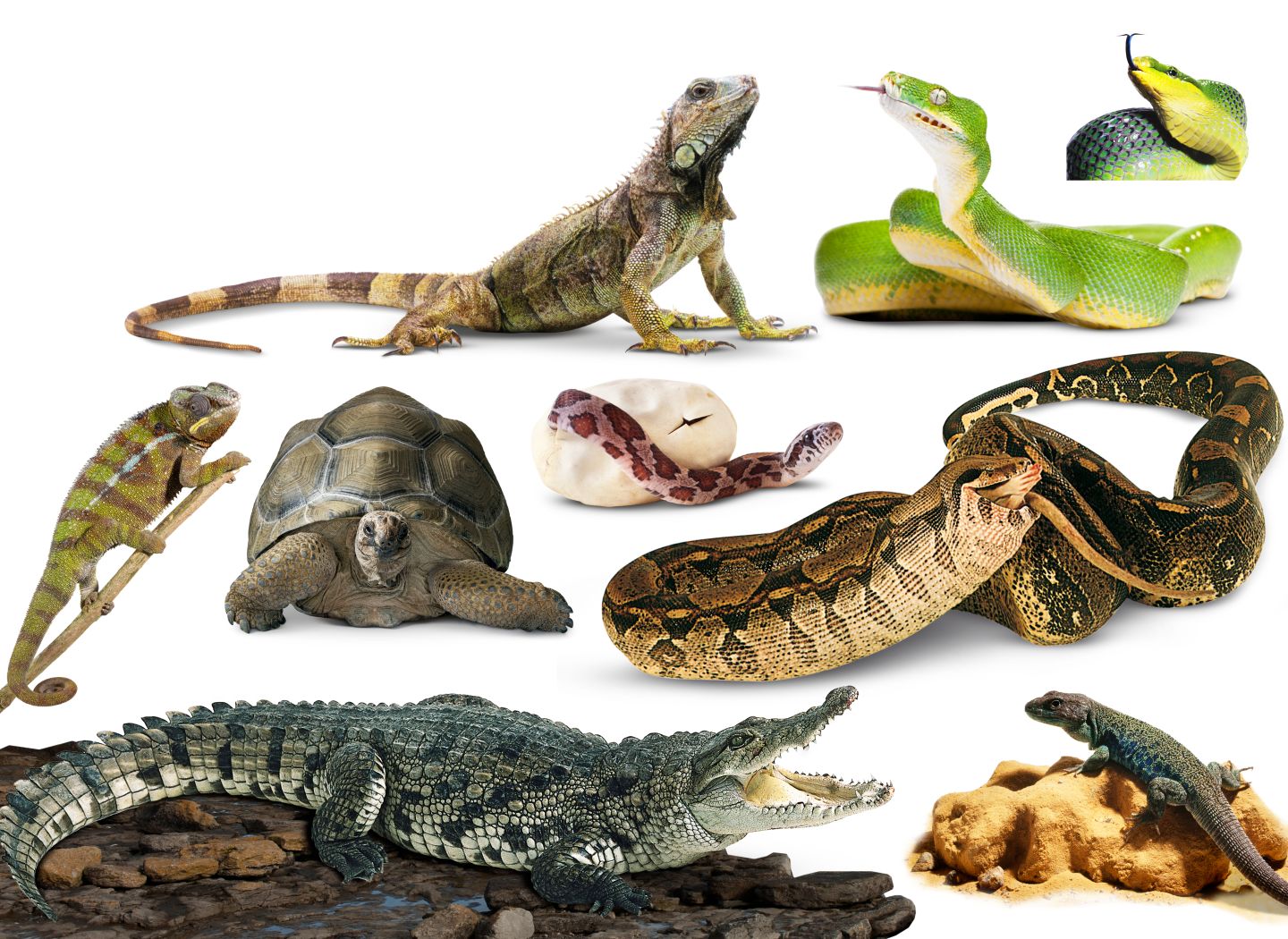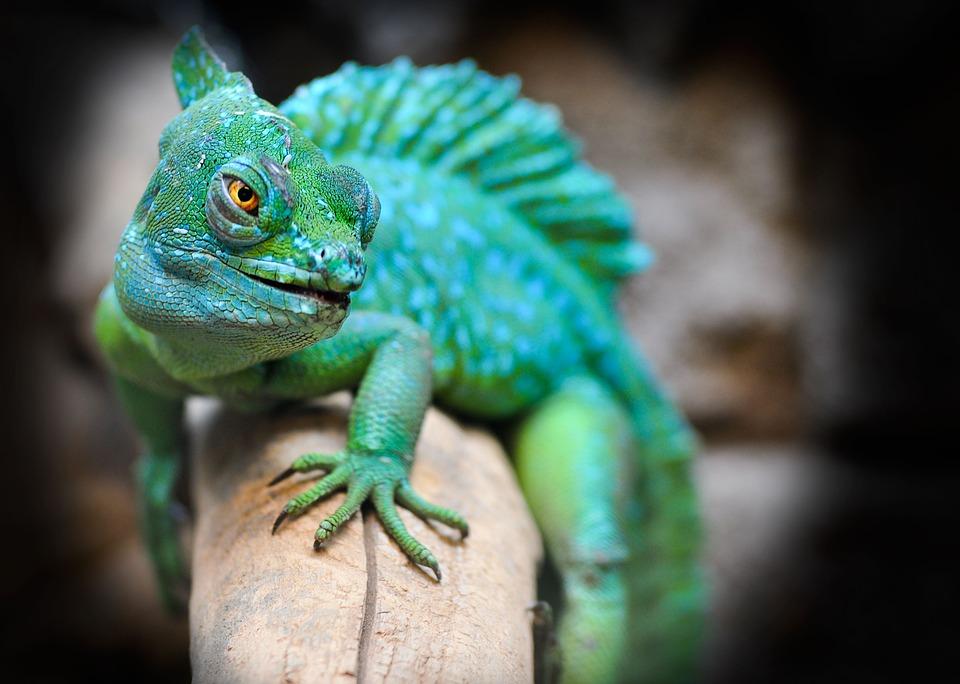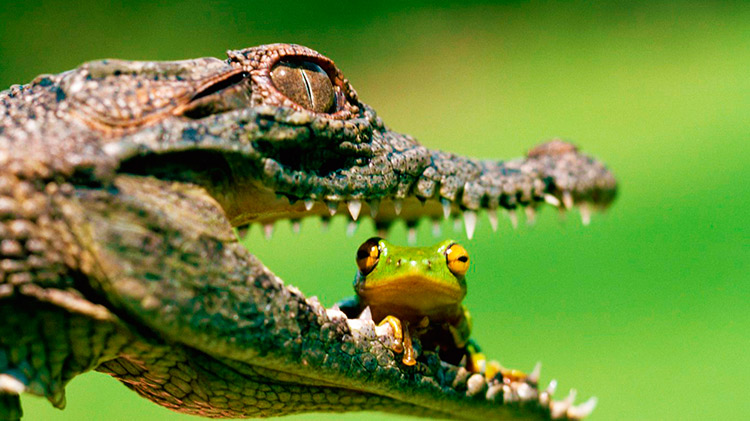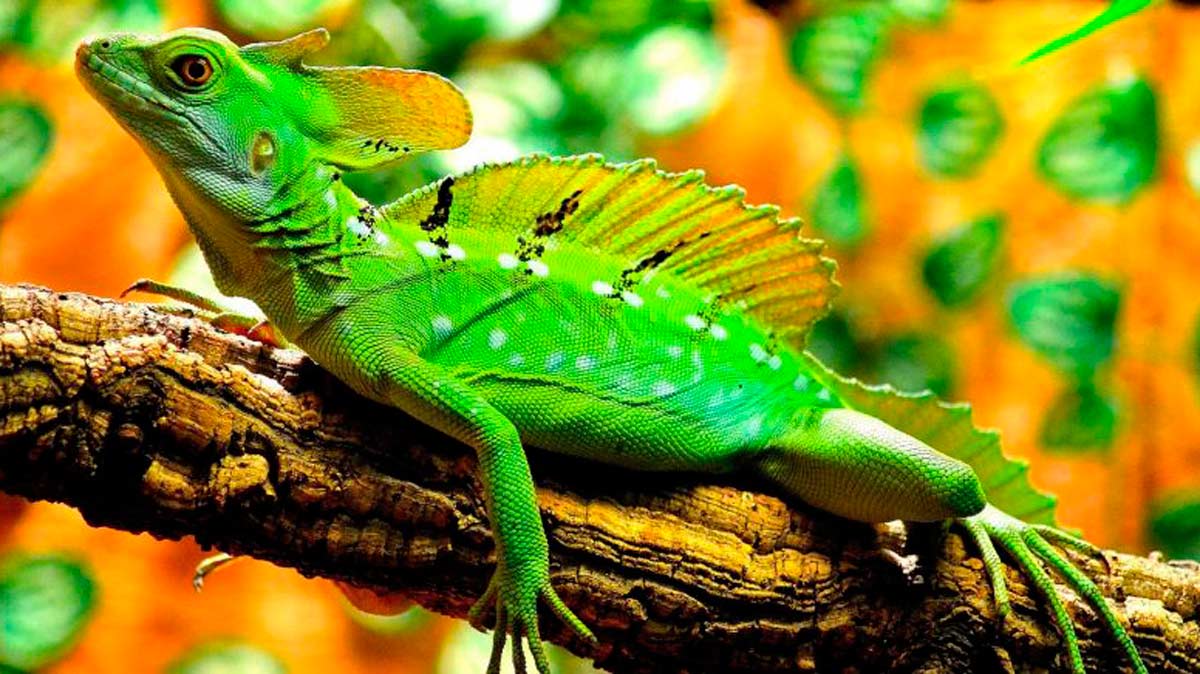Within the vast animal kingdom there is a group of quite particular but wonderfully impressive animals called Reptiles that have existed even long before the arrival of the human being, serving as symbols for kingdoms, doctrines, movies, literary works and philosophies. In fact, one of them appears within the biblical text, in short, there is no space that this species has not already taken.

How are Reptiles?
Reptiles are called a vast group of vertebrate animals with four legs, which have cold blood, whose main peculiarity is to have a skin covered with scales composed of keratin. Of them there are an incredible variety of species, mostly in warm habitats, whose name is inspired by their way of moving; etymologically, it comes from the Latin reptile, which means "that creeps"
These animals have been in movement on Earth for three hundred and eighteen million years, being the predominant living being during the Mesozoic era, which included the Jurassic, Cretaceous and Triassic, in the so-called time of the dinosaurs. They are similar from the evolutionary point of view to birds and amphibians; some mammals originated from some species of reptiles.
For certain societies and human cultures, reptiles have an impressive appearance, as well as a bit terrifying, either because of their diverse, mythical and brave appearance, speaking in the place of great hunters such as snakes, crocodiles and alligators. . A large number of these living beings, according to what is read and told, have dark powers, influenced by black magic, the most relevant case being the snake named in the biblical texts in Genesis.
Reptile Evolution
This magnificent species arose from the reptiliomorphs, which are a group of tetrapods, having the appearance and capabilities of both a reptile and amphibians, in the development of the Carboniferous period, with more species emerging during the Mesozoic era. Arriving at the conclusion of this stage, several groups of them became extinct within the Cretaceous and Tertiary periods, thousands of years ago.
Here is an educational video for children about Reptiles:
https://www.youtube.com/watch?v=wX5gL-sgr80
Reptile Characteristics
Within this order of ideas, reptiles have been able to adapt to life on land, however, some of them never left the water or returned to it to hunt and get food. In other words, it means that some of them have lungs, a heart and an optimal circulatory system that gives them the opportunity to retain water longer at the time of their dive. They have a protective layer of scales, with a rough and resistant texture; they get hot in the sun.
Most reptiles today are on all fours, however, there are some that do not, snakes being the clearest case, in contrast to other species that have a hard shell that is attached to the skeleton, as are turtles. It so happens that they have an excellent sense of smell and a great sensitive sense of touch (snakes) with which they capture the vibrations of the surface.
What do Reptiles eat?
Because a significant number of reptiles are predators, they are called carnivores that have a fairly simple digestion system, according to which the meat is easy for them to separate and assimilate.
The digestive process is carried out more slowly than in mammals, notably influencing their metabolism at the time of acquiring rest, having difficulty chewing the food ingested, being able to maintain their existence for months with a considerable size hunt for it.
In the case of herbivorous species, on the other hand, they have the same disadvantages in chewing, with respect to herbivorous mammals, although, knowing that the latter have teeth and reptiles do not, they can go through their tract rocks, called gastroliths, which provides an improvement in digestion, washing these in the stomach, facilitating the disintegration of vegetable matter. Some species use this process for immersion and as ballast (sea turtles, snakes, crocodiles).
Types of Reptiles that exist in the world
Until now, all the peculiarities described in reptiles have been incredible, as well as the description of the functioning of their digestive and respiratory systems, however, it is important to highlight that for each species they can work differently, according to the niche where they are found. , and the food it provides them. For this, it is essential to know the four types of known reptiles, these being:
Turtles (Scientific name assholes): They are the species that can live both in the sea and on land, which have a hard shell, integrated into the endoskeleton itself and preserves its torso from any attack. They have a horny beak in the mouth and a tail of reduced size, being these quadrupeds.
scaled lizards (Scientific name scaly): Within this group are snakes and lizards, not having legs or being quadrupedal, respectively, with elongated bodies covered with thick scales and a rough texture, which protect them from exposure to the sun and help them camouflage.
Alligators and crocodiles (Scientific name crocodylia): They are animals that get their food in the water, but live on land. They are considered to be one of the most feared reptilian predators found within the American and African continents, in part due to their large jaw with teeth and robust muscled bodies.
tuataras (Scientific name rhynchocephalia): They correspond to a set of fossils with life that, at present, have a specific group, called Sphenodon, which are three native species of Oceania, exactly from New Zealand. They are reptiles approximately seventy centimeters long, being quite close relatives to the dinosaurs, from the evolutionary point of view.
How do Reptiles reproduce?
The way in which reptiles reproduce is sexual, which means that there must be fertilization of the male internally to the female through copulation, by which fertilization occurs through gametes.
Consequently, to this, the female lays her eggs, mostly in a nest that she takes care of quite aggressively, or also, being able to be hidden from predators on the shores. In this way, the offspring are born, similar to their parents, but smaller.
Reptile respiratory system
The lung cavities of reptiles are spongy and have more space available for the free circulation of gases, contrary to amphibians. It is explained that a large part of the reptiles are not able to flow between gases through the skin, as amphibians with moist skin can do. Several reptilian species have muscles around the ribs, allowing increased chest space for inhalation. If this did not happen, the entire system would collapse at the moment of exhalation.
In this regard, it is known that various types of crocodiles also have folds in their skin, which keep the mouth separate from the nasal cavities, thereby allowing breathing as long as its mouth remains open. In the free flow of their gases with the environment, these species have two optimal lungs, although it turns out to be one that snakes only have for their existence.
Reptile circulatory system
These species have a powerful circulatory system with double efficiency or also called double circuit. It is explained that one of the ducts transports and takes blood from the lung cavities, while the other transports and stores blood from all over the body. The heart of this species has two atria and one or two ventricles, although most of them have a single ventricle.
This system isolates oxygen-containing blood from deoxygenated blood while the heart pumps it. Alligators and crocodiles have the most advanced and efficient hearts within the existing group of reptiles, today, according to the fact that they are made up of two atria and two ventricles, an arrangement that mammals and birds also have.
excretory system of reptiles
Urine originates in the kidneys, although for some cases of reptiles, this fluid is transported through ducts that go directly to an outlet, like that of amphibians. It is clear that the urinary bladder accumulates urine prior to its expulsion through the cloaca. This excretion of reptiles has ammonia or uric acid, being those that live in the water, those that deposit their waste, considered toxic and harmful, being the case of crocodiles and alligators.
These aforementioned animals drink a large amount of water, and this decreases the ammonia contained in the urine, allowing it to be expelled easily. On the other hand, a variety of reptiles, more than all those that live on the ground, do not deposit ammonia directly, but instead transform it into a compound called uric acid. This turns out to have a much lower degree of toxicity than the previous compound, which is beneficial for them because it is not difficult to dilute.
Body temperature
The potential they have to regulate their internal body temperature represents a great advantage for animals in motion, specifically referring to ectothermic reptiles. These living beings take advantage of their own behavior to have control over their body temperature. If what they are looking for is to gain warmth, they perch for much of the day exposing themselves to the sun, however, if they want to warm up, they move to areas where there is shade, take shelter in dens or swim.
We also invite you to view the following articles of interest:
- Domestic animals
- Jungle animals
- Carnivorous animals



